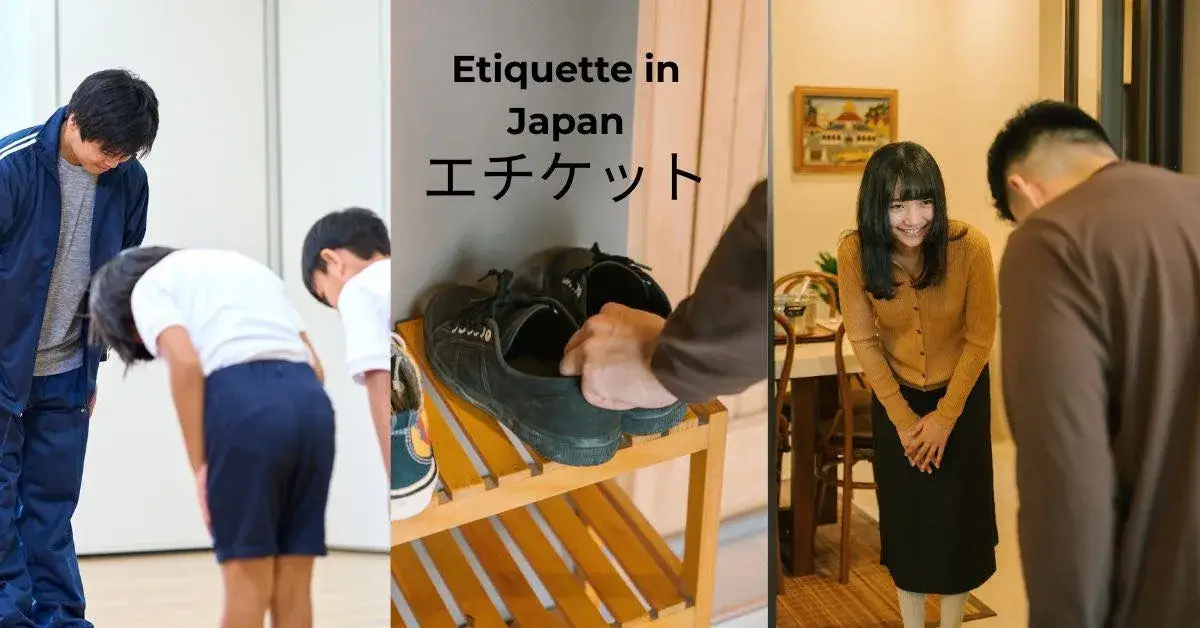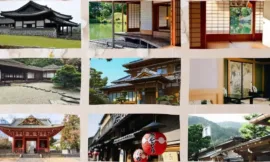Discover Amazing Facts on Japan Culture and Tradition | Etiquette in Japan
Cultural Insights on Etiquette in Japan: From History to the Present
Introduction
Discover amazing facts and history of Japan culture and traditions. Japan is a country where culture and social norms are not only respected but deeply internalized. Etiquette, or reigi (礼儀), plays a central role in shaping personal behavior, social interactions, and professional conduct. Rooted in centuries-old philosophy, etiquette in Japan is a powerful tool for maintaining “wa” (和)—the cherished concept of harmony. Whether you are visiting Japan or doing business there, understanding the nuanced world of Japanese manners is key to building trust and showing respect.

- Historical Foundations of Japanese Etiquette
Why Did Etiquette Develop in Japan?
Japanese etiquette is the product of both religious influence and social necessity. Over centuries, the need to maintain harmony in densely populated communities led to strict norms governing behavior. The two main philosophical and religious influences on Japanese etiquette are:
- Shintoism: The indigenous religion of Japan emphasizes purity, respect for nature, and the spiritual essence of objects and people.
- Buddhism: Introduced from China and Korea, Buddhism taught detachment, humility, and mindfulness—all critical to personal conduct.
Later, Confucianism, introduced from China, deeply shaped the hierarchical structure of society and the importance of proper behavior based on age and status.
Key Historical Milestones in Etiquette Development:
- Heian Period (794–1185): Courtly behavior flourished. Nobles wrote poetry to express emotion indirectly and wore layered silk garments to represent seasons and hierarchy.
- Edo Period (1603–1868): Under Tokugawa rule, Japan became highly stratified. Samurai codes (Bushidō) influenced all classes to behave with discipline, loyalty, and honor.
- Meiji Era to Modernization (1868–1912): As Japan opened to the West, formal Japanese etiquette coexisted with imported customs like handshakes and Western dining, but traditional manners remained dominant in homes and religious life.
Examples:
- Samurai code of conduct (Bushidō): Involved rituals like seppuku (ritual suicide) as an extreme act of honor.
- Seasonal gift-giving: Has its origins in agrarian societies, where offerings and thank-yous were linked to harvests and Shinto deities.
- What Japanese Etiquette Involves
What Are the Core Values Behind Etiquette?
Japanese manners are more than rules—they express mutual respect, non-confrontation, and awareness of others’ space and emotions.
Key Concepts:
- Wa (和): Harmony with the group; avoiding conflict or disruption.
- Rei (礼): Politeness and formality; often conveyed through bows, keigo, and gifts.
- Omoiyari (思いやり): Empathy; anticipating others’ needs and acting accordingly.
- Enryo (遠慮): Self-restraint; being modest and not imposing on others.
- How Etiquette Is Practiced Today
Daily Life in Japan’s Culture
In Japan culture and traditions, etiquette isn’t limited to formal settings—it’s woven into daily behavior.
Greetings:
- Bowing (お辞儀, ojigi): Varies in depth depending on formality. A slight bow for casual situations, a 30-degree bow for business, and a deeper bow for apologies or reverence.
- Avoiding physical contact: Hugging, back-patting, or kissing in public are generally avoided. A nod or bow replaces the Western handshake in many situations.
Language Use:
- Keigo (敬語): A highly complex system of honorific speech. It’s used to show respect to superiors and customers. This includes:
- Sonkeigo (尊敬語): Respectful language used when speaking about others.
- Kenjōgo (謙譲語): Humble language used when talking about oneself or one’s in-group.
- Teineigo (丁寧語): Polite language, commonly used in most social situations.
Dining Etiquette in Japan
Japanese meals are full of ritual and manners.
Key Practices:
- Itadakimasu (“I humbly receive”) and Gochisousama deshita (“Thank you for the meal”) bookend each meal.
- Use of chopsticks (hashi):
- Never pass food chopstick-to-chopstick (resembles funeral rites).
- Don’t stick chopsticks upright in rice.
- Use a separate serving pair when taking from shared dishes.
- Slurping noodles is acceptable and shows appreciation, especially with ramen or soba.
Public Behavior in Japan
Japan’s sense of etiquette shines in public settings.
Examples:
- Silence on trains: Phones are set to “manner mode,” and calls are discouraged.
- Queuing: People line up neatly for everything from elevators to subway trains.
- Tipping: Seen as inappropriate in most cases. Good service is expected and built into the price.
Business Etiquette in Japan
In business, rituals and formality are especially critical.
Dos and Don’ts:
- Punctuality is a virtue. Being even 5 minutes late can be disrespectful.
- Meishi (business cards) are offered and received with two hands and studied respectfully.
- Hierarchy and group consensus matter more than individual initiative.
- Where Etiquette is Most Noticeable
Context | Etiquette Expectations | Examples |
Homes | Shoes removed at entrance; bring small gifts | “Omiyage” for host, avoid stepping on tatami with shoes |
Religious Sites | Quiet reverence; follow shrine rituals | Bow before torii gate, wash hands at chozuya |
Public Transport | Be quiet; don’t take up too much space | Wear masks when sick, avoid phone calls |
Restaurants | Polite ordering and eating; no tipping | Say “itadakimasu,” don’t waste food |
Offices | Respect hierarchy; speak formally | Junior staff stand when boss enters |
- Why Etiquette Remains So Important
In Japan culture and traditions, etiquette sustains social cohesion. The country’s collectivist culture means that individual behavior reflects on groups—families, schools, companies. Etiquette ensures:
- Minimal conflict in a densely populated society
- Respect across generations and statuses
- Predictable behavior in social and business settings
Even as globalization influences Japan, etiquette adapts without losing its roots. For example, while younger generations may mix casual speech into their communication, they still follow unwritten rules of deference and group harmony.
Let’s dive further on what to do and what-not to do in Japan culture and traditions. when etiquette is concerned.
Etiquette on Japanese Streets & Public Spaces
DO:
- Walk on the left in most cities, especially on escalators (right side in Osaka/Kansai area)
- Stay quiet on public transport—Japanese trains and buses are silent zones
- Queue patiently—whether at a convenience store, train platform, or elevator
- Carry your trash—public bins are rare; take your litter with you
DON’T:
- Eat while walking in busy areas—it’s considered messy or rude
- Talk loudly or make phone calls on trains or buses
- Smoke on the street outside of designated areas—look for smoking zones
- Point or gesture wildly—use subtle hand movements and avoid pointing at people
Restaurant & Dining Etiquette in Japan
Dining in Japan can be a beautiful experience—but it’s full of subtle rules you should know.
DO:
- Say “Itadakimasu” before eating and “Gochisousama deshita” after a meal
- Use both hands when giving or receiving items (like menus or drinks)
- Return dishes to their original positions when finished
- Use the opposite end of your chopsticks when taking food from shared plates
DON’T:
- Stick chopsticks upright into a bowl of rice—it’s associated with funerals
- Rub disposable chopsticks together—it implies they’re cheap
- Pour soy sauce directly on rice—it’s frowned upon, especially in nicer restaurants
- Tip—it’s not expected and can even be considered rude
Public & Religious Space Etiquette (Temples & Shrines)
Visiting a shrine or temple? Show respect through your actions.
DO:
- Purify your hands and mouth at the entrance wash basin (temizuya)
- Bow slightly when entering the torii gate of a shrine
- Make a small donation, ring the bell, bow twice, clap twice, then bow again when praying
DON’T:
- Walk directly through the center of the torii gate—it’s reserved for the gods
- Take photos where signs prohibit it, especially inside sacred halls
- Touch or lean on statues or altar structures
Etiquette at Onsen (Hot Springs) & Public Baths
The onsen experience is a treasured part of Japanese culture—but there’s a strict code of conduct.
DO:
- Wash your body thoroughly before entering the communal bath
- Tie up long hair, and keep towels out of the water
- Be quiet and respectful—onsens are places for relaxation
DON’T:
- Enter without bathing first
- Swim or splash around
- Bring cameras or take selfies
- Enter with tattoos unless the facility allows them (many don’t—check in advance)
Shopping, Hotels & General Etiquette
DO:
- Bow instead of shaking hands (light bow is enough for tourists)
- Bring cash—Japan is still heavily cash-based, especially in rural areas
- Use both hands when giving or receiving money, gifts, or business cards
- Speak softly in hotel lobbies and common areas
DON’T:
- Tip in hotels or restaurants
- Touch products in stores without asking (especially in artisan or craft shops)
- Wear shoes indoors—always check for shoe-removal areas, especially in ryokan or traditional homes
Top Do’s and Don’ts Summary (Quick List)
Do | Don’t |
Be quiet in public transport | Talk on phones inside trains |
Bow to greet or say thank you | Tip service staff |
Carry your trash | Eat while walking |
Remove shoes indoors | Wear shoes in homes or temples |
Follow shrine/temple rituals | Photograph forbidden areas |
Bathe before entering onsen | Enter with dirty body or towel |
Final Thoughts
Japanese etiquette is not just a set of formal rules—it’s a reflection of deep cultural values that prioritize harmony, humility, and empathy. From samurai codes to subway silence, etiquette informs how people speak, eat, work, and live. Understanding these customs isn’t merely polite—it’s essential for connecting with Japanese society at every level. Whether you’re bowing at a temple, sharing a meal, or entering a business meeting, observing these cultural norms offers insight into the heart of Japan. When visiting Japan, respecting and practicing Japan culture and traditions are highly appreciated. For more information, visit the Japan National Tourism Organization.
